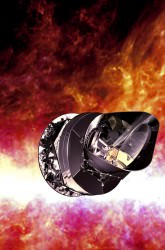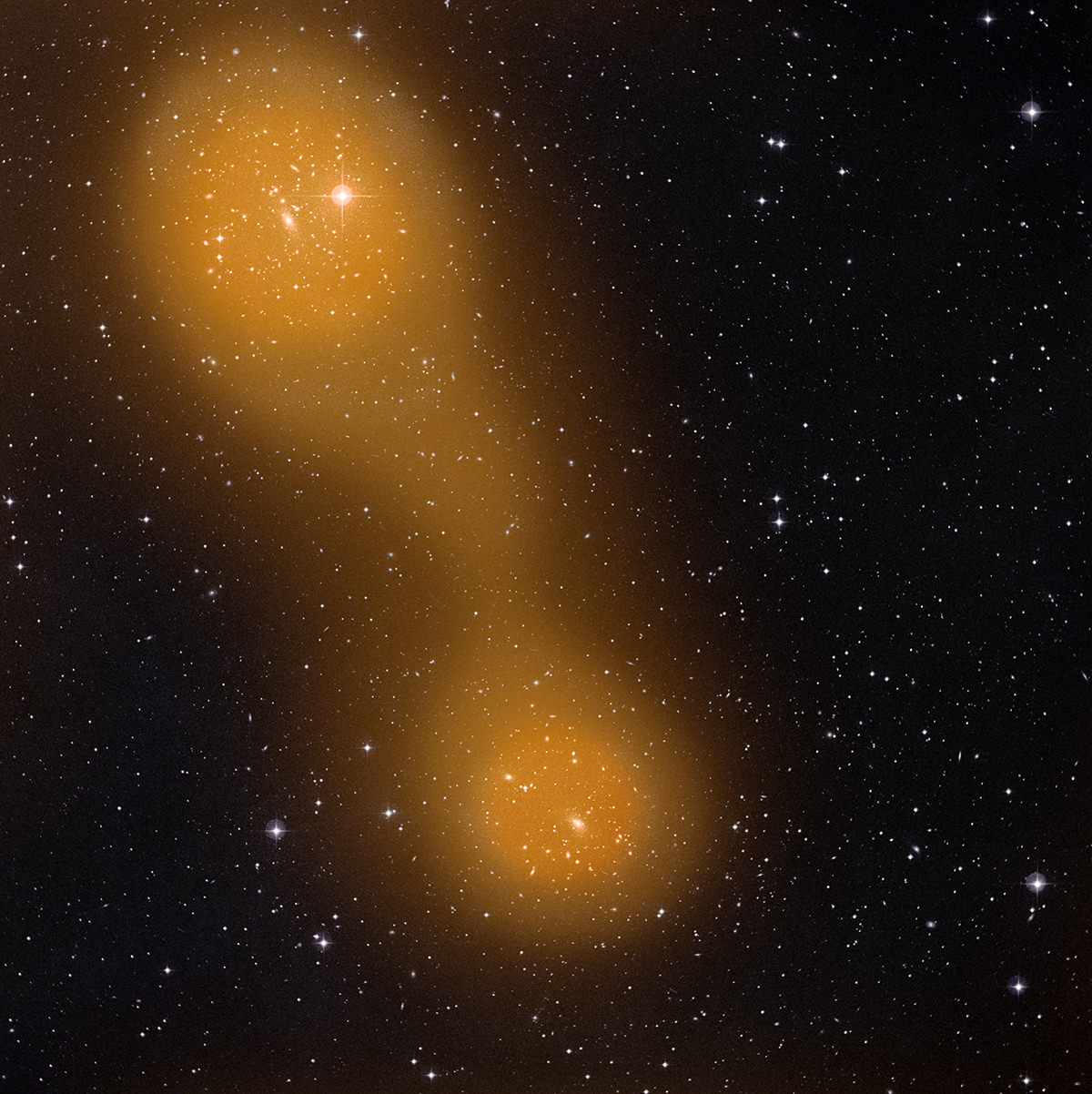An “bridge” of hot gas stretches between galaxy clusters Abell 401 and Abell 399
It may not be good practice to burn bridges but this is one super-heated bridge that astronomers were happy to find: an enormous swath of hot gas connecting two galaxy clusters 10 million light-years apart, and nearly a billion light-years away.
Using ESA’s Planck space telescope, astronomers have identified leftover light from the Big Bang interacting with a filament of hot gas stretching between Abell 401 and Abell 399, two galactic clusters each containing hundreds of individual galaxies.
 Launched in May 2009, Planck is designed to study the Cosmic Microwave Background (CMB) — the leftover light from the Big Bang. When this radiation interacts with large-scale cosmic structures, like the hot gas bridging clusters of galaxies, its energy is modified in a specific way. This is referred to as the Sunyaev–Zel’dovich Effect (SZE), and Planck is specifically attuned to finding it.
Launched in May 2009, Planck is designed to study the Cosmic Microwave Background (CMB) — the leftover light from the Big Bang. When this radiation interacts with large-scale cosmic structures, like the hot gas bridging clusters of galaxies, its energy is modified in a specific way. This is referred to as the Sunyaev–Zel’dovich Effect (SZE), and Planck is specifically attuned to finding it.
This, however, is Planck’s first discovery of inter-cluster gas found using the SZ technique.
The temperature of the gas is estimated to be around 80 million degrees C, similar to the temperature of the gas found within the clusters themselves. It’s thought that the gas may be a combination of cosmic web filaments left over from the early Universe mixed with gas from the clusters.
The image above shows the clusters Abell 401 and Abell 399 as seen at optical wavelengths with ground-based telescopes overlaid with the SZE from Planck. The entire bridge spans a distance about the size of two full Moons in the sky.
Read more on ESA’s news page here.
Top image: Sunyaev–Zel’dovich effect: ESA Planck Collaboration; optical image: STScI Digitized Sky Survey. Inset image: Artist’s impression of Planck against the CMB. (ESA and the HFI Consortium, IRAS)


